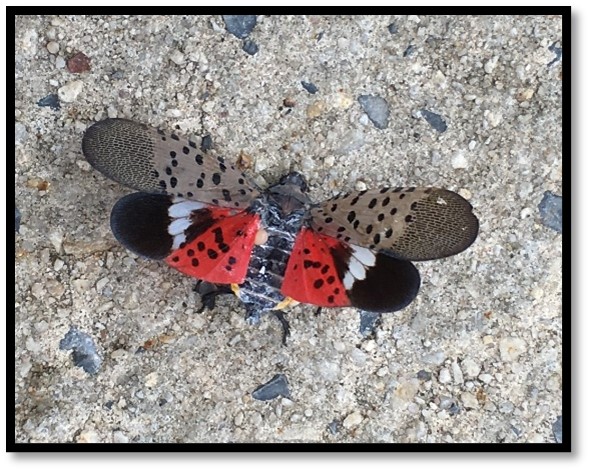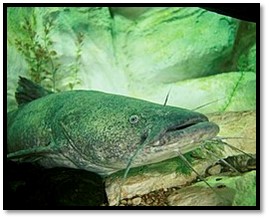

by Ryan Reed
Invasive species are understandably worrisome to natural resource managers, but sometimes they can do some good. Take the spotted lanternfly, for example. Their populations have exploded across the northeastern US in a relatively short amount of time, and their negative impacts on plants have been well documented. But one such impact, in this instance on the invasive tree of heaven (Ailanthus altissima), seems promising.
Some entomologists have stated that tree of heaven is essential throughout the lanternfly’s development, thus making the tree overwhelmingly preferred by lanternflies. Concentrated feeding on single trees, sometimes by the thousands of lanternflies over the course of consecutive years, is harming trees of heaven, even killing them. Could the lanternfly be an unwitting biocontrol for tree of heaven?
Having lanternflies, or course, is not without its perils, but recent observations have shown their net impacts on native trees may have been overstated in the early stages of the outbreak. Time will only tell the overall effect of lanternflies on our native plants, but if they decimate populations of tree of heaven, I’m ok with that. A relevant question to ask would be if, in the grand scheme of ecological pros and cons, the presence of lanternflies and their effects on trees of heaven are worth the costs.

Flathead catfish. (photo by Engbretson, Eric / U.S. Fish and Wildlife Service)
Another interesting example is the case of the flathead catfish, which arrived in the Susquehanna watershed about two decades ago. Known predators of many species of native fish and invertebrates, their presence has been decried by ecologists and some anglers. However, a large contingent of anglers is very passionate about the value of flatheads as sportfish, and recent research by Penn State has shown that the presence of flatheads in the watershed has done some good, particularly with respect to reducing another problematic invader, the rusty crayfish. Mother nature always has a way of sorting out the winners and losers in an ecosystem, but it appears that native crayfish may get a boost from an unlikely benefactor in the form of flathead catfish. Like the situation with lanternflies and trees of heaven, a similar query probably applies in the case of flathead catfish. Will the benefits of having flatheads in our waters outweigh their cumulative ecological costs?
As ecosystems establish new equilibria in response to non-native introductions, natural resource managers must also strike a balance between what people want and the important implications of research that informs the decision-making process.




